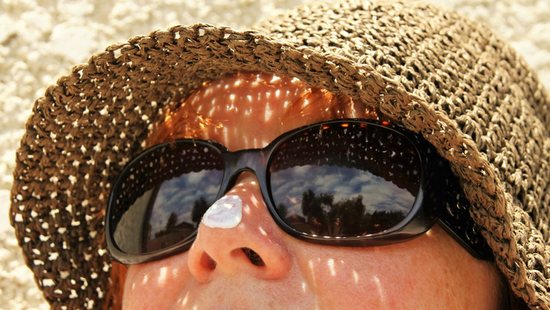It is jokingly said that the United States and Great Britain are two countries separated by a common language. What’s not so funny is the fact that the Brits—and other Europeans—use sunscreen considered superior to the lotions available in the U.S. To understand the difference it helps to have a little background in the science of ultraviolet (UV) rays.

There are two types of ultraviolet radiation that can contribute to skin damage, premature aging, and cancer. UVB light is responsible for sunburn. UVA rays penetrates the skin more deeply, potentially damaging cells, which can lead to skin cancer. In the United States, UVA filters include chemicals such as oxybenzone and avobenzone. According to dermatologists these ingredients are effective but break down quickly and protect against only certain UVA rays. Zinc oxide doesn’t break down but covers the skin in the gunky white film commonly seen on the noses of surfers and lifeguards.
Sun worshippers on French Riviera and other European beaches have access to sunscreen with the chemical ecamsule, referred to by the trade name Mexoryl SX. Skin cancer experts say ecamsule offers stronger UVA protection. It also produces a sunscreen formulation that lasts longer and feels better on the skin, making people more likely to use it. So why can’t Americans buy sunscreen with this superior protection? Blame the FDA.
Applications for sunscreen products with ecamsule and seven other ingredients have been languishing at the FDA for years, some since 2003. Many of the UVA-battling ingredients were approved years ago in Europe, Asia, and South America. The holdup is blamed on the FDA’s complex rule-writing process and the fact that it is chronically understaffed and underfunded. Whatever the case, the FDA has not approved a new sunscreen ingredient since 2000. Since that time an estimated 150,000 Americans have died of melanoma, the most deadly type of skin cancer. For what it’s worth, the FDA now says the sunscreen issue is one of its highest priorities.

